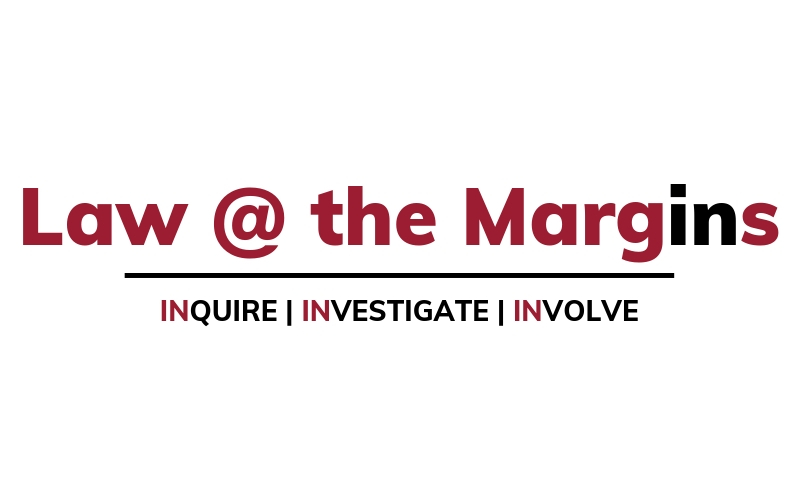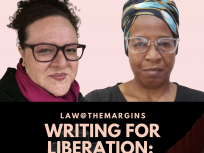To be in the margin is to be part of the whole
but outside of the main body.
We looked both from the outside in and from the inside out.
We understood both.
This mode of seeing reminded us of the existence of a whole universe, a main body made up of both margin and center. Our survival depended on an ongoing public awareness of the separation between margin and center and an ongoing private acknowledgment that we were a necessary, vital part of that whole.
bell hooks, Feminist Theory, From Margin to Center
bell hooks, as a scholar, has had an lasting influence on me both professionally and personally. As I began my second year of law teaching, and as I reflected on what it means to traverse from social justice oriented legal work to the legal academy, during a time legal education is placed alongside bad business profiteering from unsuspecting law students, I went back to her book, Feminist Theory, From Margin to Center.
Although her book is focused on a critique of the feminist movement, the way in which she enters the debate provides useful analogies for those in the law as someone who provides a critique of social justice movement, but who is equally supportive. As an academic, she provides a framework to understanding my role as a teacher.
In my life, I traversed different spaces, and I found myself having to constantly negotiate what my new identities meant or what meaning is ascribed to that identity. In a single moment, I may find myself both an insider and outsider, and not fully understanding why like I was caught in some mental jet lag.
It could be because of my birth in Bangladesh, in the months before its independence from Pakistan, or being a new immigrant from Bangladesh to the working class neighborhood of Bronx. Perhaps, I was aware of this insider/outside status when I would leave each morning from my home in the Bronx to attend an elite private girls school in Manhattan, and onward to Columbia. Or, perhaps, it is ferrying back and forth, to the courtrooms and legislative spaces as a lawyer and back to the communities of color that I advocated for, that sometimes see me as their own or an privileged outsider. Now, in legal academy, in a junior, non-tenure track, position, I continue to inhabit this insider/outsider status. In the elitism of the law teaching profession, the contingency of my labor as a professor is not secured. However, I have no illusions that this somehow renders me equivalent to the contingent taxi or domestic workers I have long represented. In that respect, I am a privileged insider.
In these journeys, I have always felt disjointed, or at others times a fraud for occupying so many seemingly different identities, spaces. I felt a loss each time I seem to have made some “success” from the working class identified girl now lawyer/law professor. There is some conversation about the alienation and displacement that people of color experience entering privileged spaces, but I have not heard much on the class alienation that I have experienced and find exhausting to navigate as insider/outside. When you operate at both the margin and center, one can feel like a perpetual trespasser, until one readjusts to the landscape, locates oneself, and finds a way to belong.
Although I have described these personal narratives to illustrate how in me being at/outside the margin shifts in relation to my position and relation to others, it is only to echo Gayatri Spivak’s caution in Outside in the Teaching Machine (Routledge 1993) of the cooptive history of marginality that reproduces hierarchies we are seeking to disrupt. Any useful naming of margins and marginality must be premised on “constantly shifting and tangling network of the techniques of knowledge and strategies of power” (page 61) Rightly, she calls for vigilance for systemic reproductions of gender, race, class identities that produce the inequities we are seeking to address.
Spivak’s vigilance is similar to hook’s “mode of seeing” both acknowledging that it is this observing, watching, making sure that is important for those who care about social justice.
In this regard, a blawg about law at the margins cannot be about some fixed space, or can serve to reify any identity. It has to employ this vigilance, this mode of seeing of the margin inside and out of the center.
Reading bell hook’s work, and the above quote made me realize that there is a perspective or a “mode of seeing” that is worth to write down. Specifically, I think that her perspective and others like Spivak can be useful for an examination of our legal system. There are many more that I hope this blawg can explore.
How do these theorists add to our understanding of law, social justice. If we understand how the law operates to promote justice or to contain it, we can ensure our legal system adheres to its democratic ideals.
Or, if we share the stories of what happens when the law excludes certain communities from rights, or creates categories that assign rights to certain individuals and communities, then, we can better understand how our legal system operates. That knowledge of where legal lines are drawn should open up possibilities and demands for change.
In this blawg, I hope to employ different tools to capture the perspective of communities marginalized by law, including theoretical discussions, journalist like coverage of stories from the communities, and where appropriate share my own personal narrative.
I realize that this is an ambitious project, crossing different academic disciplines, and draws on “expertise” that I have not yet learned. It seemed equally important to take those risks because just as it is important that the content of what I explore deal with issues of marginality but that the methods by which I examine these ideas should place myself if necessary in often uncomfortable position of not knowing or the outsider.
I hope that when viewed as a whole, the blawg provides some coherency to my project of looking at what happens to ideas, people and laws at the margins. How can we speak about “margins” and marginality differently – are there negotiations here that need to be made traversing, occupying, shifting this outsider/insider status. If so, how are those decisions made, for what ends, and for those committed to social justice, are we creating, expanding, new landscape for change, or have we simply cemented the existing inequities.
I deliberatively chose the blawg as a medium to write my thoughts down because it will allow me to write, reflect, investigate, and revise my thinking. It will also allow for sharing of ideas from colleagues, and friends. Technology has allowed for greater possibilities for democratization of ideas, knowledge production through crowd-sourcing. Being deliberative about this medium is an example of using a method that aims to introduce this project as one that is not fixed, but dynamic.
I hope that this exploration of what happens to people, communities when laws and legal institutions draw boundaries will generate useful conversations, critique, inspire to investigate and inform collective action.
Click here




